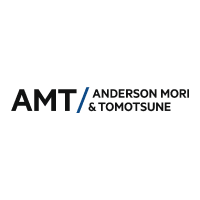

Global chief legal officer | Mujin







Nobu Hiroi
Global chief legal officer | Mujin
What are the most significant cases, projects and/or transactions that you and/or your legal team have recently been involved in?
The following narrative describes a resolved matter involving an unnamed third party and contains only non-confidential, non-privileged information. It does not disclose the identity of any counterparty or the terms of any confidential agreement. Nothing herein should be construed as a waiver of legal professional privilege, work product protection, or confidentiality obligations.
One of the most significant matters we have handled involved a high-stakes patent dispute initiated by a Fortune 100 company, which accused us of infringement. Upon receiving the cease-and-desist letter, I led a swift and strategic assessment, evaluating both our legal exposure and the counterparty’s historical enforcement behaviour. This enabled me to brief our board with clarity and to lead the decision to resist rather than settle.
To pursue this approach, I retained two top-tier U.S. patent litigation firms, each assigned a distinct role. Drawing on my prior experience as a litigator, I deliberately structured the team to preserve optionality and avoid premature escalation. The first firm focused on shaping our pre-litigation posture, while the second was positioned to step in should formal proceedings commence, including expedited forums such as the ITC. This dual-track model allowed us to remain fully prepared while signalling openness to early resolution.
In parallel, I led a business analysis of the counterparty’s public disclosures and commercial positioning, which revealed strategic motivations behind their enforcement posture. This insight enabled us to reframe the dispute as part of a broader commercial dialogue. The matter was ultimately resolved through a commercial agreement, following our readiness to assert robust technical defences and to challenge the validity of the asserted patents if necessary. The result was a marked shift in the counterparty’s approach: they chose to partner with Mujin and integrate our platform into their future offerings, bringing the dispute to a close and opening a new strategic chapter.
This matter illustrates how legal, when deployed strategically, can defuse existential risk while creating business opportunity, safeguarding both our IP integrity and long-term commercial leverage.
How do you approach managing legal aspects during periods of instability or crisis to ensure the organisation’s resilience?
I see Legal as the natural architect of organisational resilience. At its core, a company is a vast system of interdependent workflows. The law exists both to enable and to constrain these systems, allowing them to scale, innovate, and operate safely. Because Legal touches nearly every function in the organisation, it is uniquely positioned to design the workflows, agreements and governance structures that enable a company to absorb shocks and emerge stronger.
In times of instability, our first role is not just to contain legal exposure, but to map the full system, identifying key internal and external stakeholders, pressure points and risks. From there, we construct a communication and decision-making framework that neutralises tension and builds trust, often across conflicting priorities.
One example: when escalating tariffs and geopolitical tensions disrupted Mujin’s ability to operate efficiently across the US, Japan and China, I led the legal restructuring of our intercompany sales and supply workflow. This required coordinating with sales, R&D, supply chain, tax, operations and finance to develop a legally sound structure that preserved operational agility, reduced customs exposure and future-proofed our licensing model. Rather than relying on ad hoc workarounds, we created a dynamic and resilient system for managing supply chain risk under volatile conditions, turning a reactive challenge into a strategic redesign.
Resilient legal teams do not just put out fires. They design systems that make future fires less likely. Whether through crisis escalation protocols, contractual fallback mechanisms or legal guardrails built into technology platforms, we create durable frameworks that integrate law into the operational fabric of the company.
Ultimately, Legal can act as the connective tissue that brings business, technical and compliance teams together, transforming reactive firefighting into proactive, coordinated problem-solving.
What is a cause, business or otherwise, that you are passionate about? Why is this?
I am passionate about building the legal and ethical foundation for data ownership and governance in the age of autonomy. As robotics and AI systems increasingly operate in the physical world, making decisions, generating outcomes and learning from real-time environments, data becomes both the fuel and the output of intelligence. It is no longer sufficient to treat data as a by-product or a compliance issue. We need a legal architecture that can track, assign and protect rights across the data lifecycle.
The analogy I often use is that data is the new oil, but true value lies in how it is refined. Just as the industrial economy required legal infrastructure to govern oil extraction, refinement and trade, the autonomous economy demands legal systems that govern data transformation, ownership and licensing.
At Mujin, we are working to put this vision into practice. Our Physical AI platform, Mujin Machine Intelligence, drives autonomous robotics through a structured data lifecycle, powered by our proprietary Digital Twin technology. Unlike traditional automation, our Digital Twin continuously simulates, predicts and optimises robotic execution in real time, enabling self-adaptive automation with minimal human intervention.
To support both operational efficiency and legal clarity, we propose to categorise data into four stages: Crude Data, Refined Data, Enriched Data and Performance Data. This layered framework enables us to assign ownership and usage rights with precision. Crude Data, raw unprocessed information from the client’s environment, remains client-owned background IP. Refined and Enriched Data, where Mujin’s algorithms structure, optimise and enhance data, are treated as Mujin-owned trade secrets. Performance Data, real-world execution outputs, is Mujin-owned but licensed back to clients for transparency and value realisation. This proposed model is designed to balance platform defensibility with partner trust while laying the groundwork for broader industry adoption.
Ultimately, my long-term goal is to help develop standardised frameworks for data licensing and governance — rules that clarify how data moves through intelligent systems, how legal rights evolve through transformation and how companies can operate responsibly and competitively in a data-centric world. This is more than an IP issue; it is a foundational question for the future of commerce, autonomy, and digital trust. I believe in-house legal leaders should be at the forefront of shaping it.
Looking forward, what trends do you foresee in the legal landscape over the next five to ten years that companies should prepare for?
One of the most important trends I am tracking and actively working to lead is the transformation of Legal’s role in the age of automation and autonomous systems. At Mujin, this underpins our legal vision: ‘Be the leader of the autonomous world, embedded accountability and transformative strategy.’
As robotics and AI systems begin to make decisions, execute tasks and even shape business outcomes independently, legal frameworks can no longer sit on the sidelines. We must embed accountability, transparency and compliance directly into both the technology and the organisation itself so that governance is built into the system architecture, decision-making workflows and operational norms from the outset, not layered on afterwards. This shift requires Legal to move from being a reactive fire fighter to becoming a proactive system designer, ensuring that legal principles are not just applied but lived through how the company builds, operates and scales.
Traditionally, legal teams have focused on providing solutions: tailored responses to discrete problems. But to keep pace with technological transformation, the best legal teams must shift from solutions to products – reusable, scalable frameworks that align with how automated systems actually function. This requires design thinking: the ability to anticipate user needs, engineer workflow-based governance and build trust into the infrastructure itself.
Just as constitutional framers designed legal systems to govern societies for generations, legal today must design the frameworks that govern autonomous systems and algorithmic decision-making. In this context, lawyers are no longer just advisors; they are architects of governance and stewards of digital trust.
At Mujin, we are operationalising this vision through platform-based licensing models, the automation of contract workflows to embed legal safeguards into our operations and by laying the legal groundwork for physical AI standard-setting, defining principles for safe deployment, platform accountability and responsible data use. Each of these efforts reflects our belief that clarity, safety and accountability must be embedded directly into both our technology and our organisation, not added on afterwards.
In short, the legal profession must rise to meet the moment by shifting from reactive protectors to proactive builders, creating legal systems that are not only scalable and resilient but worthy of the autonomy we are enabling.